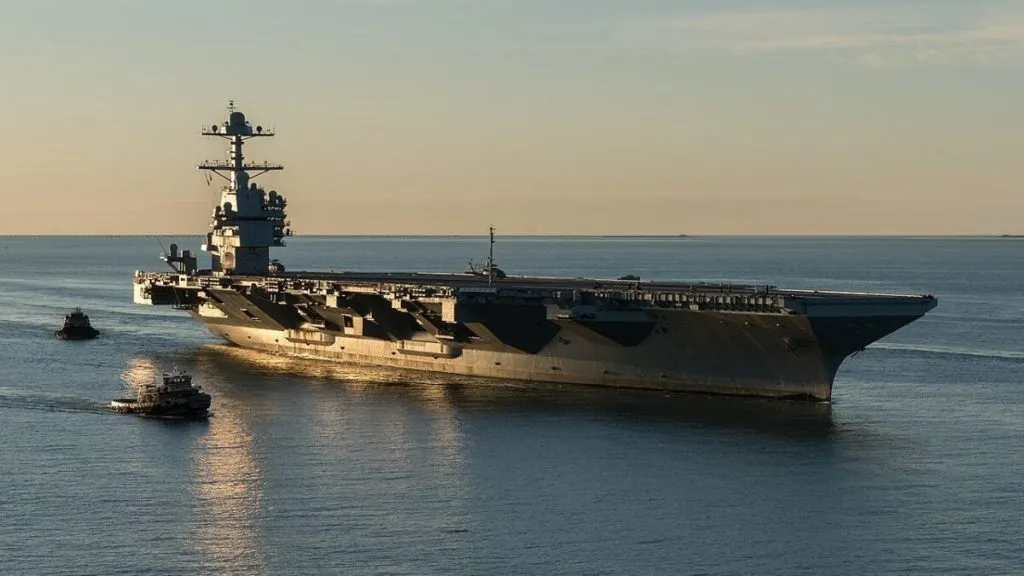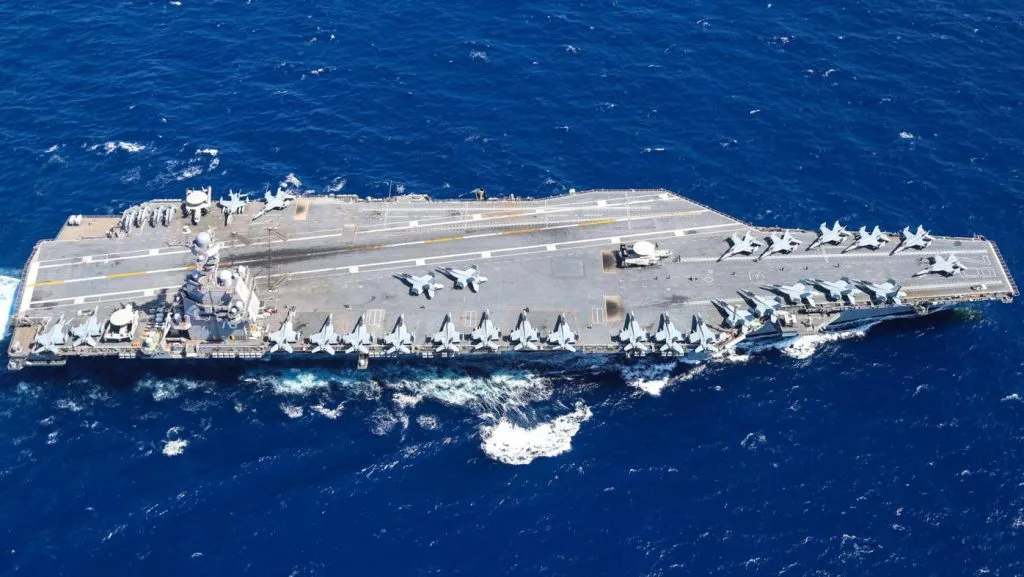The First-In-Class aircraft carrier USS Gerald R. Ford (CVN 78) sails through the Atlantic Ocean with sailors diligently conducting operations on the flight deck. This impressive carrier highlights the prowess of its class within the United States Navy’s Nimitz-class carriers. As a nuclear-powered vessel, the USS Gerald R. Ford (CVN-78) stands as the world’s largest aircraft carrier and serves as the flagship of the Navy’s carrier fleet. With its enormous size and advanced capabilities in displacement, firepower, operational systems, and more, it is undoubtedly the most exceptional ship ever built.

The USS Gerald R. Ford features numerous advancements over the previous Nimitz-class carriers. These improvements include advanced propulsion systems, increased operational efficiency, enhanced aircraft launch and recovery systems, and state-of-the-art radar technology. These enhancements ensure that the USS Gerald R. Ford is equipped with the latest technological innovations throughout the ship.

While I lack real-time information beyond 2021, the USS Gerald R. Ford was expected to remain active and prominent in various operations and exercises worldwide. The carrier’s primary mission is to act as a mobile and flexible platform for power projection, carrying a combination of aircraft, firepower, and support personnel for power projection, humanitarian efforts, and other support roles globally.

During its active duty, the USS Gerald R. Ford will participate in a wide range of missions, including air superiority, strike warfare, maritime security, anti-submarine warfare, disaster relief, intelligence gathering, and various training exercises with allied and partner nations. It is certain to continue its role as a mobile and versatile asset, enhancing American presence and capability worldwide.